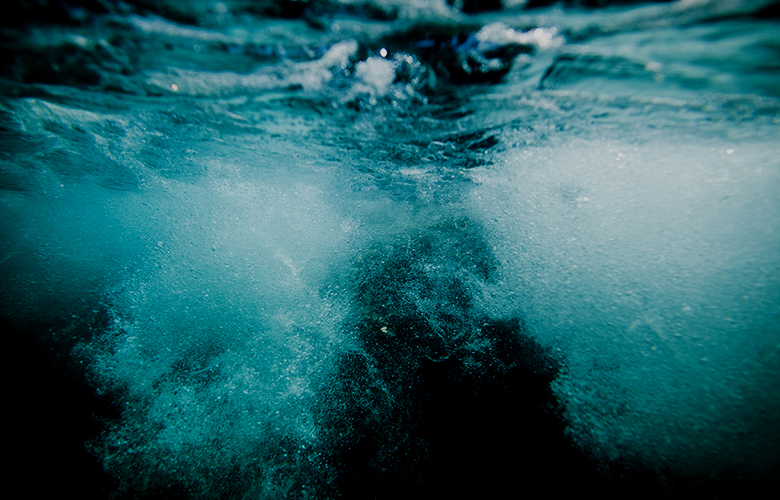
Our show was called The House of Dancing Water. Geysers shot sixty-five feet high and could catapult a person into the air if they happened to stand in the wrong spot at the wrong time. Jets and rain were additional attractions augmenting the – in itself breathtaking – pool which was hidden under eight hydraulic lifts. They could be moved at any time to reveal either a flat surface or a body of water, alive with bubbles.
Imagine you are sitting in a theatre-in-the-round, the size of a football field. A sixty-five foot long and thirty-seven foot high pirate ship rises up on the lifts, out of the depths of the circular stage pool. All of a sudden, thirty scary pirates surface and jump onto the edge of the stage. They face you, muscular, menacing, and dripping with water. The music ramps up and the pirates climb the boat, performing tricks and jumping from great heights over and over again.
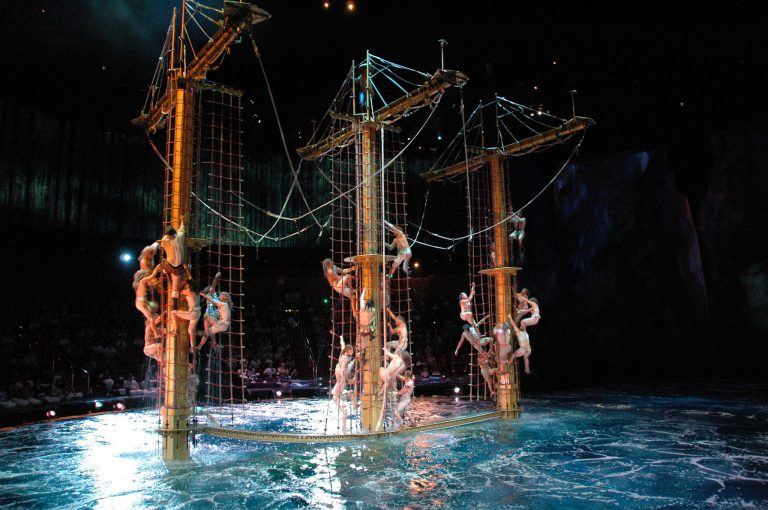 The Golden Boat Act
The Golden Boat ActThese tortured souls have been trapped in the dark depths of the ocean for a very long time. They have now been freed for just a moment and rejoice with daredevil acts. At the end of the six-minute act, the pirate ship, shrouded in fog, sinks back into the depths, disappearing forever. Thunder rolls, lightning strikes. A torrent of rain plummets from the almost incomprehensibly high ceiling of the theater, pushing the fog aside on its way down. The dense wave of fog rolls over your head, revealing a shipwrecked sailor, all alone, lost on the vast ocean. Unbeknownst to you, the telescopic masts of the boat are being retracted underwater and the ship driven off stage to a large aquatic backstage area hidden under the auditorium.
Moments later, the shipwrecked sailor finds himself beached on a dry stage. You and the rest of the audience gasp at witnessing the sudden appearance of solid ground where only moments before there had been a life-sized pirate ship and then nothing but water and a struggling survivor swimming for his life. This is only the beginning of the magnificence to come.
The view of the stage from our underwater positions, too, was a sight to behold. When masking came on, it meant hundreds of pods at the bottom of the pool would release billions of tiny air bubbles. These bubble configurations released from thirty feet under bloomed like giant sparkling mushrooms, growing wider in diameter the closer they came to the surface.
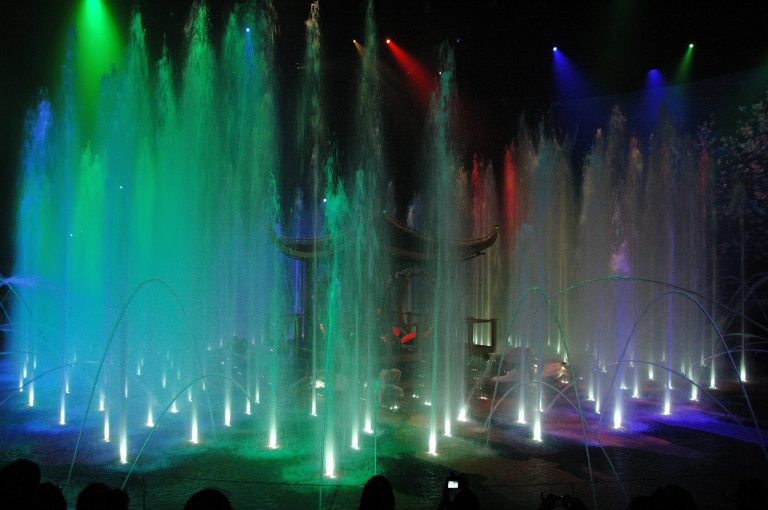 Fountains in the stage lifts
Fountains in the stage liftsNo matter what difficulties I battled backstage, as soon as I entered the world of water, I felt confident and at peace. Imagine doing anything from being a stagehand to a stage manager taking care of performers during the shows, to a props technician, to a coach who would train and prepare the artists for rehearsals and shows. Now imagine doing all of that underwater. That’s the life of a show diver.
As a show diver, my foremost duty was to guarantee the performers’ safety, while at the same time always remaining invisible.
I treasured the bursts of activity resulting from this conundrum. For example, two artists would be submerged in a sinking pagoda. We would have to wait for the lifts to be far enough down to hide us from view of the audience before we would be able to rush out in a flurry of fin strokes to get to the performers who were holding their breath and waiting for us inside the pagoda. We would reach them within three seconds, regulator in hand. This rescue was exhilarating no matter how often I did it. The sinking pagoda created a vortex, whereas rain fell from above, creating turbulence. Additionally, the sinking lifts created a strong drift. It was like navigating through a washing machine. I loved pushing myself to the limit, going ever faster, steadier, and stronger.
The audience never saw the divers. The masking bubbles made sure we remained well hidden during crucial moments. Unfortunately, they also distorted both sound and vision to the extreme.
I learned to become supremely self-assured in all my movements, yet fight complacency at all times. Anything could happen, at any given moment. Not being fully alert could easily cost someone his life. Keeping calm was essential. Panic was not an option in our line of work.
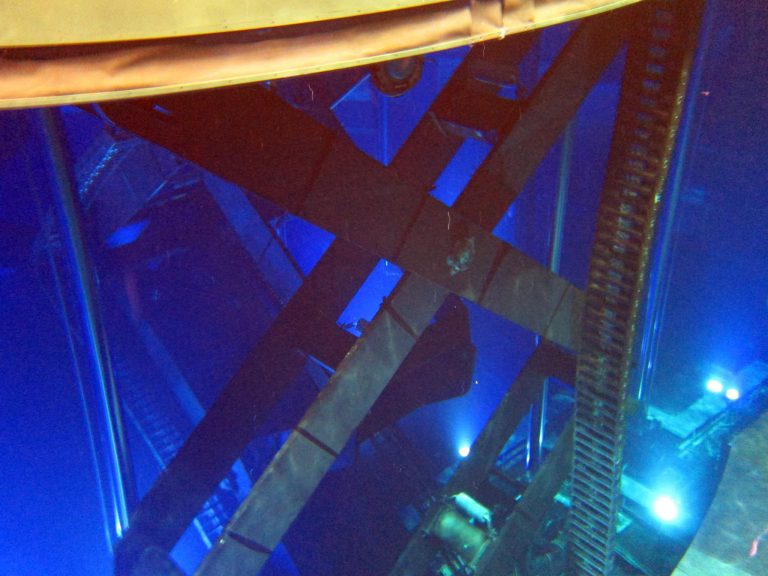
Thankfully, I had been blessed with abundant willpower. One evening, crossing under moving stage lifts to get into a strategic position for my next cue, a high-pressure line burst right underneath me. Within seconds, I was enveloped in a turbulent tornado of water and bubbles. I couldn’t see. Which way was south? Which way north? Swimming the wrong way would expose me to dangerous scissor lifts that could easily snap my body in half. I had no choice but to stay put, keep panic at bay, and wait until someone turned off the compromised system.
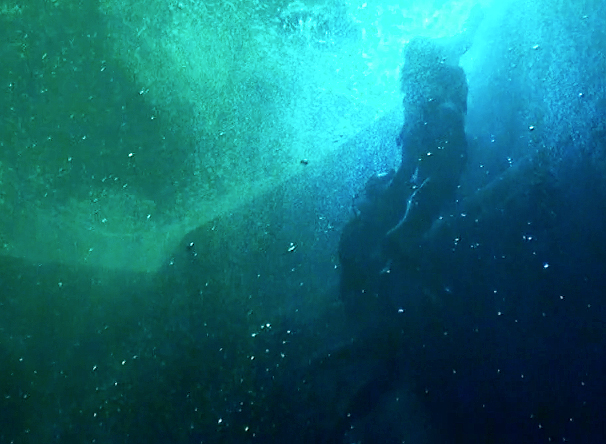
Pressure waves surged through the water unabated, slamming me into the many pipes and protruding edges located just underneath the lifts. I felt like an infant at the whim of a raging giant. After two minutes that seemed like an eternity, the water calmed. I found myself only a few feet away from where I had been initially. Battered and bruised, hurting in places I didn’t even know existed, and shaking from shock and adrenaline, I swam to safety. After catching my breath, I gave my team leader the standard diver sign for “ok” (thumb and index finger coming together to create a circle) and continued with my responsibilities for the rest of the night.
Life of a Diver: Part 1 is an excerpt from Paralian by Liam Klenk, February 3, 2018. To purchase Paralian or for more information, visit LiamKlenk.com.
Add Oil: Immersing Myself In A Chinese Production


Liam Klenk was born in Central Europe and has since lived on four continents. Liam has always been engaged in creative pursuits, ranging from photography and graphic design, to writing short stories and poetry, to working in theatre and shows. In 2016, Liam published his first book and memoir, 'Paralian'.
Read Full Profile© 2021 TheatreArtLife. All rights reserved.

Thank you so much for reading, but you have now reached your free article limit for this month.
Our contributors are currently writing more articles for you to enjoy.
To keep reading, all you have to do is become a subscriber and then you can read unlimited articles anytime.
Your investment will help us continue to ignite connections across the globe in live entertainment and build this community for industry professionals.